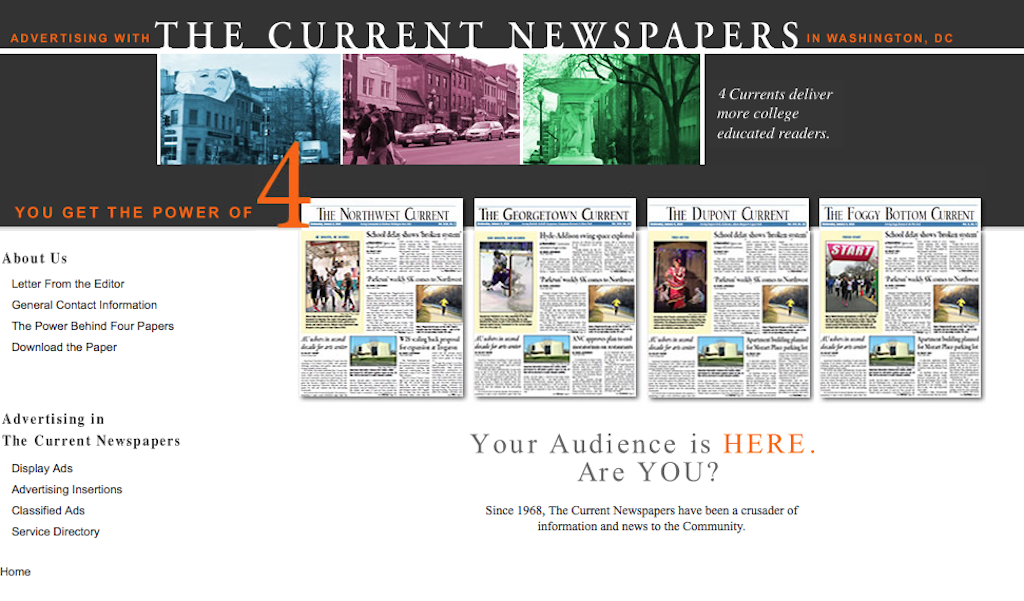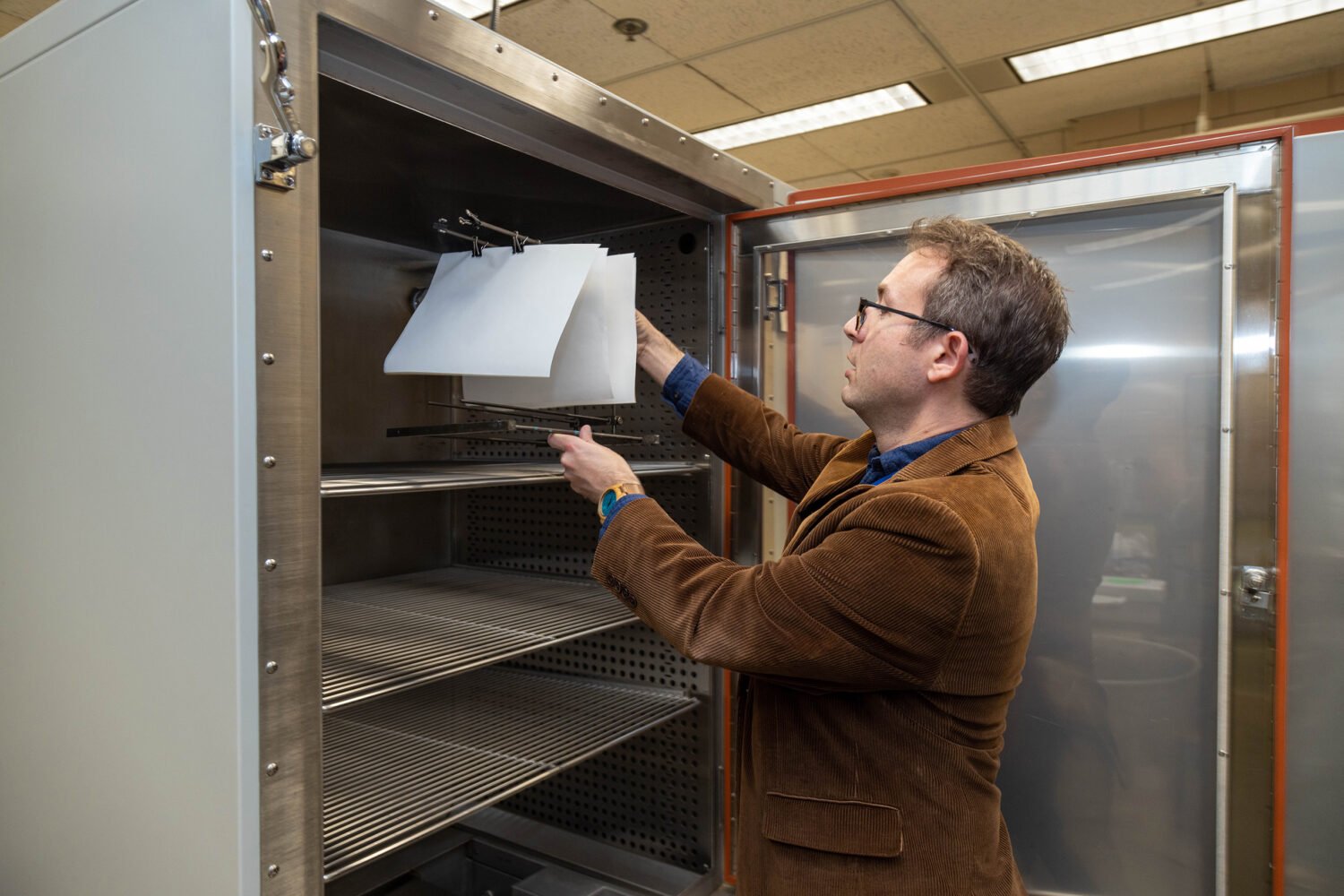Sometime soon, maybe even Wednesday, Current Newspapers will roll out a new website. This is media news because the publisher of four Northwest DC community papers has steadfastly held out against delivering news to its readers news online; if you wanted to read a Current title online, you could only use its website to download a PDF of a print issue. But that’s about to change, says David Ferrara, the company’s president and chief operating officer.
The new site, as a recent letter from Publisher and Editor Davis Kennedy told readers, will indeed be “interactive.” It will be “fully interactive,” Ferrara stresses. But unlike the investments in digital made by many publishers who think they’ll eventually meet all their audience online, Current Newspapers’ new site will be secondary to the print edition. The website will be a “value add to the print,” Ferrara says, and while selling advertising, “the focus is going to be selling the print edition.” Advertisers will be able to upgrade to banners; Current also has an e-mail newsletter Ferrara says goes out to thousands of people.
What about the stuff under the banner ads? About “90 percent” will come from the weekly papers, which include the Northwest Current, the Foggy Bottom Current, the Georgetown Current, and the Dupont Current. Some of the rest will be stuff that doesn’t fit in the regular papers; breaking news could also find its way onto currentnewspapers.com. “It may not be 24/7 immediately, but it will be updated on a daily basis as quickly as possible,” Ferrara says.
Current Newspapers’ new website is currently in a beta that’s been circulating among advertisers and editorial staffers for input. The target date for launch is March 15, Ferrara says, but it should be ready no later than next week. It will be free, at least at first, though Ferrara says the company isn’t averse to implementing a paywall down the line. The business case is two-pronged: more exposure for advertisers–success, he says, will be “when the audience grows to a certain point that we can increase our rates for the advertising”–plus easier access to the papers’ content.
Almost anything would be easier for readers than what Current has now, but delivering news more than once a week is a bold change for the company, whose print editions have outlasted a virtual parade of digital palookas looking to dislodge it and other traditional local news media: TBD.com. Borderstan. The original version of Patch. Loudounextra.com. Hill Now.
“The fact that we believe we have a very effective addition to our print is based on the fact that the website is not standalone,” Ferrara says. “One of the founders of Borderstan is a guy I’ve met a couple times, and he understands very much, as do I, that it’s tough to make a success of a standalone website.”




















